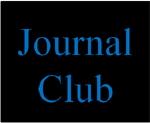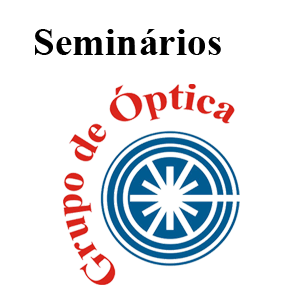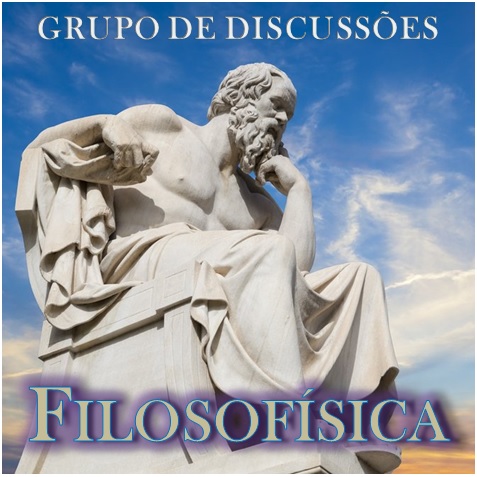Journal club: “Impurity-induced bound states in superconductors with spin-orbit coupling”
 We study the effect of strong spin-orbit coupling on bound states induced by impurities in superconductors. The presence of spin-orbit coupling breaks the SU(2)-spin symmetry and causes the superconducting order parameter to have generically both singlet (s-wave) and triplet (p-wave) components. As a result, impurity induced bound states corresponding to different angular momentum channels hybridize and display a number of qualitatively different features from that of the well-known Yu-Shiba-Rusinov states in conventional s-wave superconductors. In particular, we find that in the presence of spin-orbit coupling the spectrum of the impurity induced bound states depends on the orientation of the magnetic moment of the impurity. Our predictions can be used to distinguish the symmetry of the order parameter and have implications for the Majorana proposals based on chains of magnetic atoms placed on the surface of superconductors with strong spin-orbit coupling [1].
We study the effect of strong spin-orbit coupling on bound states induced by impurities in superconductors. The presence of spin-orbit coupling breaks the SU(2)-spin symmetry and causes the superconducting order parameter to have generically both singlet (s-wave) and triplet (p-wave) components. As a result, impurity induced bound states corresponding to different angular momentum channels hybridize and display a number of qualitatively different features from that of the well-known Yu-Shiba-Rusinov states in conventional s-wave superconductors. In particular, we find that in the presence of spin-orbit coupling the spectrum of the impurity induced bound states depends on the orientation of the magnetic moment of the impurity. Our predictions can be used to distinguish the symmetry of the order parameter and have implications for the Majorana proposals based on chains of magnetic atoms placed on the surface of superconductors with strong spin-orbit coupling [1].
[1] S. Nadj-Perge, I. K. Drozdov, J. Li, H. Chen, S. Jeon, J. Seo, A. H. MacDonald, B. A. Bernevig, and A. Yazdani, Science (2014).




 Os vidros calcogenetos pertencem a um importante grupo de materiais inorgânicos que possuem um ou mais elementos calcogênios (S, Se ou Te) em sua composição, ligados covalentemente com formadores de rede tais como As, Ge, Sb, P. Esses materiais apresentam boa estabilidade térmica e química, alto índice de refração e transparência na região do infravermelho.
Os vidros calcogenetos pertencem a um importante grupo de materiais inorgânicos que possuem um ou mais elementos calcogênios (S, Se ou Te) em sua composição, ligados covalentemente com formadores de rede tais como As, Ge, Sb, P. Esses materiais apresentam boa estabilidade térmica e química, alto índice de refração e transparência na região do infravermelho. Molecular imaging is emerging as an incredibly powerful tool in oncology research. With unprecedented specificity to capture some of the key cancer hallmarks (e.g., proliferation), it can assess pharmacodynamic effects of various therapies on tumor response. A general overview of molecular imaging, its potential and limitations will be presented in the lecture. An example of a pharmacodynamic study using 3′-deoxy-3′[(18)F]-fluorothymidine, [(18)F]-FLT PET/CT in assessing response to anti-angiogenic therapies (VEGFR TKI) will be shown. Patient-specific modeling of tumor response to VEGFR TKI based on FLT PET/CT molecular imaging will be used to illustrate intimate connection between tumor modeling and molecular imaging-based clinical trials.
Molecular imaging is emerging as an incredibly powerful tool in oncology research. With unprecedented specificity to capture some of the key cancer hallmarks (e.g., proliferation), it can assess pharmacodynamic effects of various therapies on tumor response. A general overview of molecular imaging, its potential and limitations will be presented in the lecture. An example of a pharmacodynamic study using 3′-deoxy-3′[(18)F]-fluorothymidine, [(18)F]-FLT PET/CT in assessing response to anti-angiogenic therapies (VEGFR TKI) will be shown. Patient-specific modeling of tumor response to VEGFR TKI based on FLT PET/CT molecular imaging will be used to illustrate intimate connection between tumor modeling and molecular imaging-based clinical trials. Título: Development of selective trypanocidal compounds targeted against the glycolytic enzymes of the parasites
Título: Development of selective trypanocidal compounds targeted against the glycolytic enzymes of the parasites Após apresentar uma breve descrição do modelo padrão, Leandro discutirá os desafios que as medidas da primeira fase de operação do LHC, como a observação do bóson de Higgs, colocam para a Física de Partículas. Tendo em vista que parece pouco provável a observação direta de novas partículas em um futuro próximo, medidas de precisão, como as realizadas na Física de Sabores Pesados, se apresentam como a janela mais promissora para uma melhor compreensão das interações fundamentais. Será discutido como esta janela está sendo explorada dando destaque à contribuição de grupos brasileiros nesse setor.
Após apresentar uma breve descrição do modelo padrão, Leandro discutirá os desafios que as medidas da primeira fase de operação do LHC, como a observação do bóson de Higgs, colocam para a Física de Partículas. Tendo em vista que parece pouco provável a observação direta de novas partículas em um futuro próximo, medidas de precisão, como as realizadas na Física de Sabores Pesados, se apresentam como a janela mais promissora para uma melhor compreensão das interações fundamentais. Será discutido como esta janela está sendo explorada dando destaque à contribuição de grupos brasileiros nesse setor. Nesta apresentação será abordado o acidente nuclear de Chernobyl, ocorrido em abril de 1986. O acidente é considerado o mais grave da história da geração de energia nuclear. Serão apresentadas fotos de recente visita à região do acidente, em que pode-se verificar a pujança de vida selvagem no local. Também será abordada a cronologia do acidente e suas consequências ambientais e à saúde humana. Estudos sobre os efeitos da radiação à vida selvagem serão analisados e, em seguida, as lições ao cientista que são motivadas por esses estudos. Dentre essas lições, interessa a interpretação humana de fatos objetivamente observados. Essa interpretação pode, eventualmente, tornar-se uma construção mitológica.
Nesta apresentação será abordado o acidente nuclear de Chernobyl, ocorrido em abril de 1986. O acidente é considerado o mais grave da história da geração de energia nuclear. Serão apresentadas fotos de recente visita à região do acidente, em que pode-se verificar a pujança de vida selvagem no local. Também será abordada a cronologia do acidente e suas consequências ambientais e à saúde humana. Estudos sobre os efeitos da radiação à vida selvagem serão analisados e, em seguida, as lições ao cientista que são motivadas por esses estudos. Dentre essas lições, interessa a interpretação humana de fatos objetivamente observados. Essa interpretação pode, eventualmente, tornar-se uma construção mitológica.